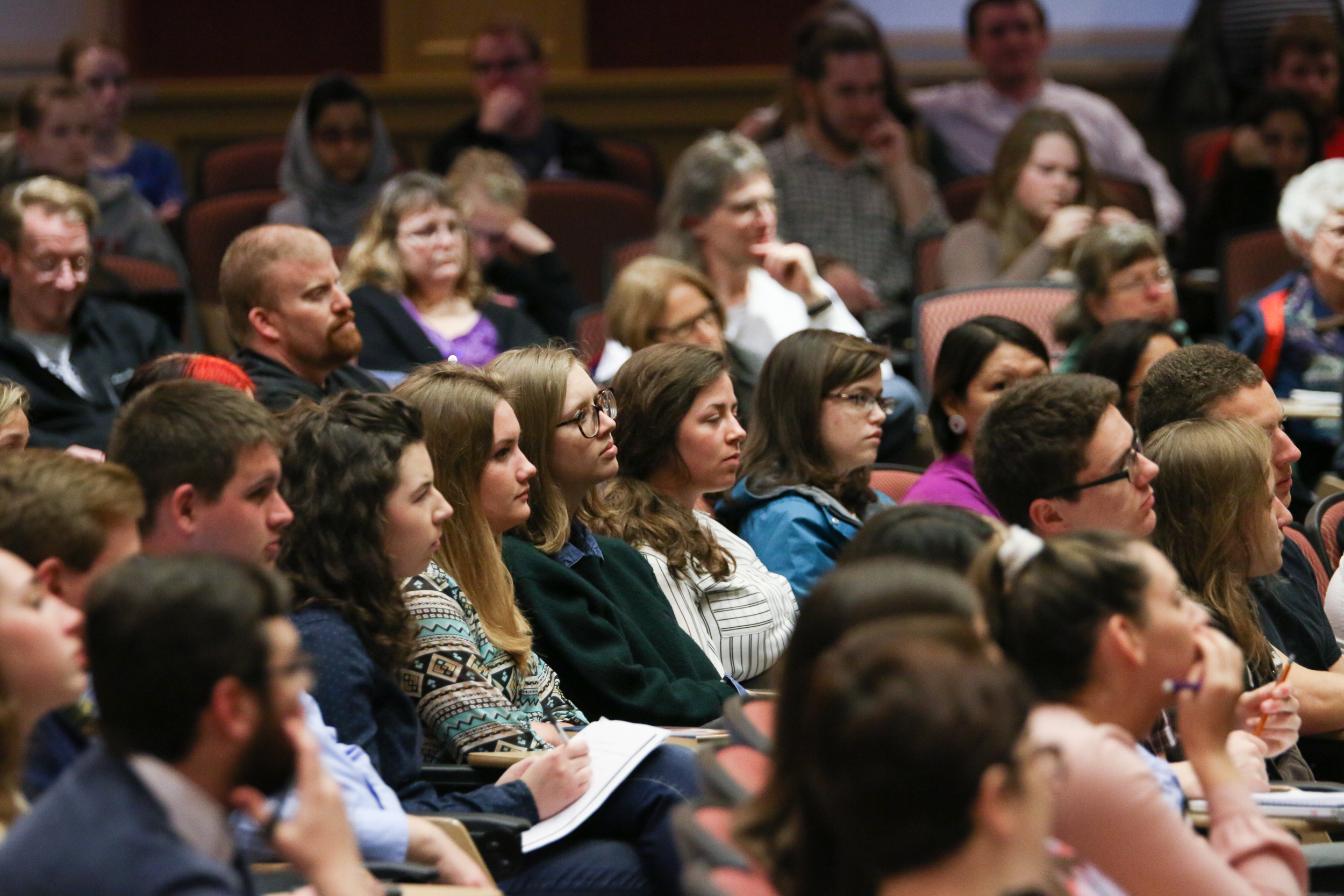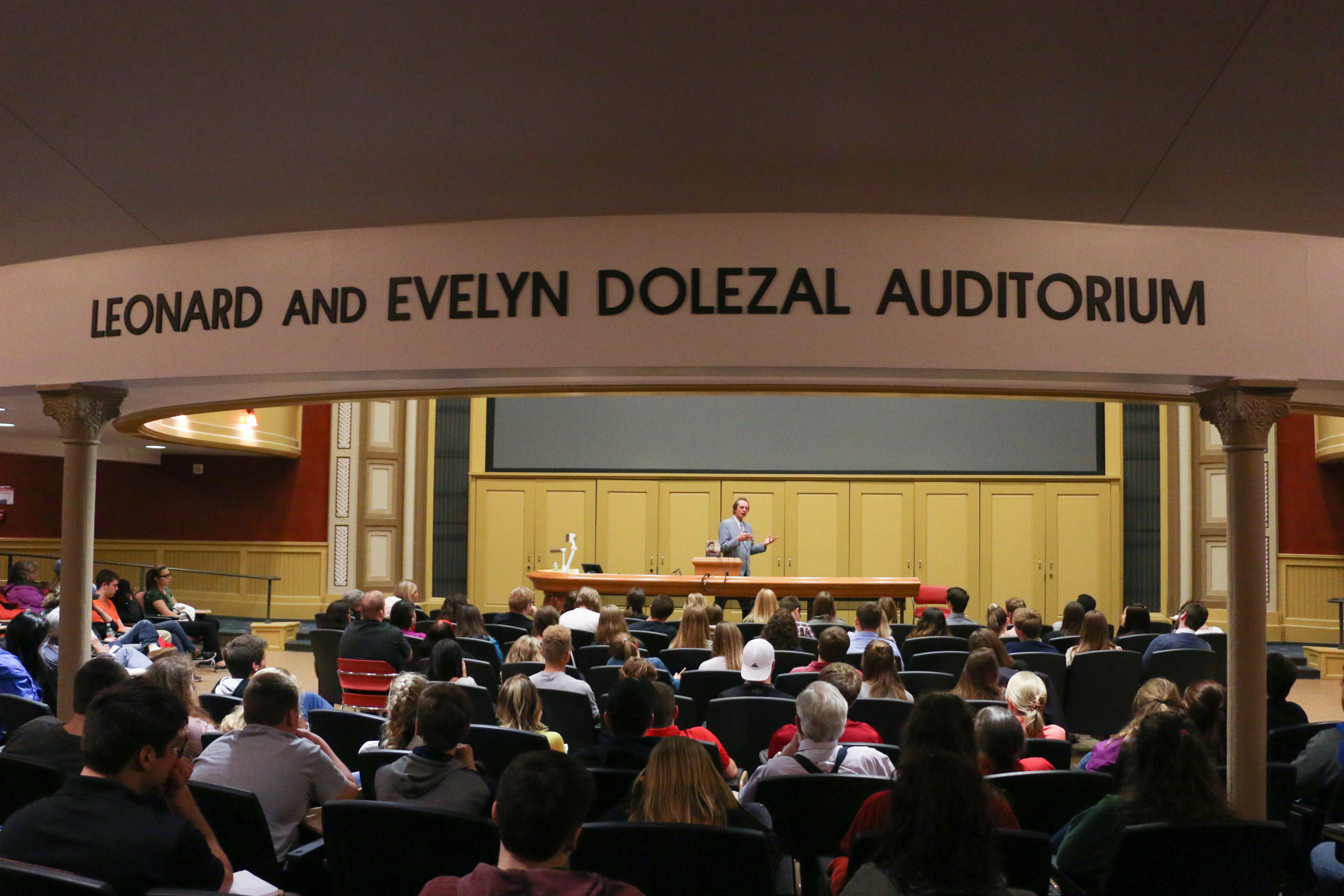
By Jessica Bennett
Joe Starita, author and journalism professor at the University of Nebraska-Lincoln, shared some of his methods and wisdom in a packed auditorium on Monday evening. Discussing his latest book, "A Warrior of the People: How Susan La Flesche Overcame Racial and Gender Inequality to Become America’s First Indian Doctor," Starita described how he dedicated himself to telling this woman’s story.
As future journalists, here are five things Greenlee students can learn from his techniques:
1. Get inside your subject’s head.
When telling other people’s stories, it’s important to get to know them inside and out. After Starita decided to write about Susan La Flesche, he dove headfirst into research, gathering all the information he possibly could.
“I spent months with an industrial-strength vacuum cleaner running across the landscape of every state historical society, every university she ever went to, every school she ever went to, just vacuuming up every piece of paper that I could get my hands on that had the name Susan La Flesche on it,” Starita said.
Meticulously reading her journals, diary entries and letters, he pieced together her daily activities and began to understand her hopes, desires and fears.
“I knew what she was thinking,” he said.
By including precise information such as the exact temperature outside on a particular day or the material of her coat, Starita crafted a fascinating account of La Flesche’s experiences. Minute details like this are what bring a story to life.

Literary devices such as foreshadowing, rhythm and dialogue aren’t just for fictional pieces. Starita weaves these techniques into his writing to make factual stories more captivating.
“You’re taking these traditional tools and you’re superimposing them over a true story, over a non-fiction setting,” he said.
Called narrative non-fiction, this style aims to invoke emotions and draw the reader in. While writing “A Warrior of the People,” Starita said he worked to pull readers closer until they were sitting alongside La Flesche in her buggy, feeling the frigid winter air.
“My goal is to collapse the distance between your eyes and the text on the page,” he said.
Through rich detail and thoughtful storytelling, it’s possible.

3. Take a look at the world through a different lens.
Journalists have the ability to present a view of the world that many people may not typically see, which Starita attempted by writing through the eyes of an Omaha Indian woman.
The American West has historically been presented from a man’s perspective, Starita said. By focusing on La Flesche’s life, he told a story that differed drastically from those of Buffalo Bill, Crazy Horse and George Custer.
As a Native American woman, La Flesche represents what Starita considers “the most underrepresented bandwidth in America’s ethnic quilt.” Overcoming ethnic and gender obstacles, she reveals a more intimate, feminine view of the Great Plains.
For journalists, telling these kinds of stories is both a challenge and a privilege.
4. Don’t settle until it sings.
While writing this book, Starita frequently lay awake at 3 a.m., obsessing over a specific sentence that wasn’t quite right. In moments like those, he would get out of bed, make coffee and continue writing until he was satisfied.
“I was determined at all costs to make sure I was doing everything possible to tell her story,” he said.
Good writing takes effort and determination, and perfecting it may take a few sleepless nights or early mornings.

5. Take your ego out of the story.
A good storyteller knows how to get out of the way.
“Don’t have your ego and your footprint on the story,” Starita said. “You don’t need that. You’ll screw it up.”
Starita takes an Ernest Hemingway-like approach to writing, preferring understatements to exaggerations. In his opinion, the writer’s presence shouldn’t be felt at all. Instead of adding unnecessary “hype,” let the story tell itself.
“Turn down the flame,” he said. “The lower the flame, the bigger the explosion.”
Starita’s public lecture was cosponsored by American Indian Studies, the College of Liberal Arts & Sciences, the Greenlee School of Journalism & Communication and the Committee on Lectures (funded by Student Government). To learn more about the event, read the Iowa State Daily’s recap.